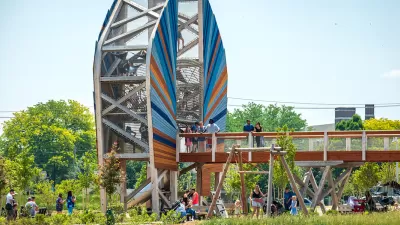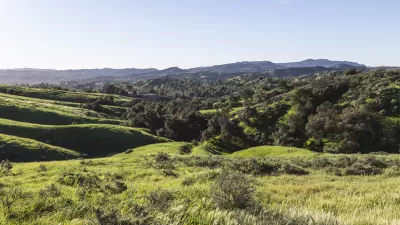Human beings are both born and programmed to need open spaces. As our existence becomes increasingly urban, cities and towns must provide the open spaces our natures require.

We desire character, complexity and freedom to move in our urban parks. We prefer wild to “human formed” landscapes. We enjoy a sense of mystery, a sense of discovery as we pick our way and wander through non-concrete environs.
In their research to identify factors that cause open areas to be favoured or rejected Swiss Federal Research Institute researchers revealed that our desire towards the natural world is both biological and cultural. Our programmed need to interact with nature appears both determined by our genes and what we learn as we grow and age.
Reviewing the literature, the researchers cite geographer Jay Appleton’s prospect refuge theory. The hypothesis holds that we are biologically programmed to desire expansive landscapes that provide areas of protection. The thinking is that our evolutionary need for survival was founded within open landscapes that allowed for refuge from predators and routes of escape yet also provided enclosure from which to hunt from.
Biological programming also points towards the necessary requirements of life that nature provides us: clean air and water; the provision of soil and nutrients; regulation of local climate and extreme events. As place evolved for life, so did life evolve to exist in that place.
Our brains tell us we need nature. Our emotions make it feel right. Our cultural trigger to need nature can be tied to the link between our awareness of nature’s provisions and our actions towards preserving it. If we experience nature, if we’re oriented towards it, we tend to want to be in it, and being in it tends to encourage our actions to protect it.
Culturally programming is further illuminated by placemaking fashions, by landscape design trends, by what’s hip, trendy, etc. The historical inclination of Europeans was to tame wild nature, to conform it to mathematic and geometric shapes. More recently we have moved towards conservation. And now we have parklets and pop-up parks and yard naturalization projects that further indicate our need to see green, to be in green—to have less concrete, less sterility in the places we encounter. We need to protect our large urban parks and wedge in green wherever it might be appropriate (but arguably not always appropriate for all).
The research consistently reveals that our need for wild places is a blend of genes and being—pre-determined programming and programming through action, through living. As we continue to become a more urban species, it will be vitally important that our cities exhibit nature; that natural landscapes remain open, accessible and properly managed.
Although urban dwellers tend to perceive nature as out in the country, in the hills, the lakes and the mountains (something to travel to on weekends and holidays), cities can be areas of wild complexity. Ensuring these areas perpetuate in our built environments, as well as providing outreach and education to enable our connection to them, will be vital to ensuring our cities remain in our human interests. Cities must expand nature to be human.
Connect with me on Twitter @stevenpsnell or Facebook stevenpsnell.
My novel, The Undergraduates, is available for download here, or at any fine ebook retailer.

Trump Administration Could Effectively End Housing Voucher Program
Federal officials are eyeing major cuts to the Section 8 program that helps millions of low-income households pay rent.

Planetizen Federal Action Tracker
A weekly monitor of how Trump’s orders and actions are impacting planners and planning in America.

Ken Jennings Launches Transit Web Series
The Jeopardy champ wants you to ride public transit.

Crime Continues to Drop on Philly, San Francisco Transit Systems
SEPTA and BART both saw significant declines in violent crime in the first quarter of 2025.

How South LA Green Spaces Power Community Health and Hope
Green spaces like South L.A. Wetlands Park are helping South Los Angeles residents promote healthy lifestyles, build community, and advocate for improvements that reflect local needs in historically underserved neighborhoods.

Sacramento Plans ‘Quick-Build’ Road Safety Projects
The city wants to accelerate small-scale safety improvements that use low-cost equipment to make an impact at dangerous intersections.
Urban Design for Planners 1: Software Tools
This six-course series explores essential urban design concepts using open source software and equips planners with the tools they need to participate fully in the urban design process.
Planning for Universal Design
Learn the tools for implementing Universal Design in planning regulations.
Heyer Gruel & Associates PA
Ada County Highway District
Institute for Housing and Urban Development Studies (IHS)
City of Grandview
Harvard GSD Executive Education
Toledo-Lucas County Plan Commissions
Salt Lake City
NYU Wagner Graduate School of Public Service






























